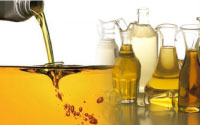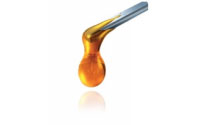Base Oil – Group I Group I, which are also know as conventional oils, with the majority of hydraulic and bearing lubricants being made using an API Group I stock. Group I main advantage is their high solvency, this means that they have a high tolerance to degradation by-products, which allows for the life of a lubricant to be extended.
Group I, which are also know as conventional oils, with the majority of hydraulic and bearing lubricants being made using an API Group I stock. Group I main advantage is their high solvency, this means that they have a high tolerance to degradation by-products, which allows for the life of a lubricant to be extended.
Group I base stocks contain less than 90 percent saturates and/or greater than .03 percent sulfur and have viscosity index greater than or equal to 80 and less than 120.
Base Oil – Group II  Group II base oils are common in mineral based motor oils currently available on the market. They have fair to good performance in lubricating properties such as volatility, oxidative stability and flash/fire points. They have only fair performance in areas such as pour point; cold crank viscosity and extreme pressure wear . Due to the higher level of purity this base stock gives lubricants a longer service life.
Group II base oils are common in mineral based motor oils currently available on the market. They have fair to good performance in lubricating properties such as volatility, oxidative stability and flash/fire points. They have only fair performance in areas such as pour point; cold crank viscosity and extreme pressure wear . Due to the higher level of purity this base stock gives lubricants a longer service life.
Group II base stocks contain greater than or equal to 90 percent saturates and less than or equal to .03 percent sulfur and have viscosity index greater than or equal to 80 and less than 120.
Base Oil – Group III Group III base oils are subjected to the highest level of mineral oil refining of the base oil groups. Although they are not chemically engineered, they offer good performance in a wide range of attributes as well as good molecular uniformity and stability. Also have the most stringent level of petroleum oil refining, with the benefits of this group being undeniable. The lower volatility, higher viscosity and lower pour points give lubricants from this base stock a longer service life.
They are commonly mixed with additives and marketed as synthetic or semi-synthetic products. Group III base oils have become more common in America in the last decade.
Group III base stocks contain greater than or equal to 90 percent saturates and less than or equal to .03percent sulfur and have viscosity index greater than or equal to 120.
4 cSt
6 cSt
Group III base oils are subjected to the highest level of mineral oil refining of the base oil groups. Although they are not chemically engineered, they offer good performance in a wide range of attributes as well as good molecular uniformity and stability. Also have the most stringent level of petroleum oil refining, with the benefits of this group being undeniable. The lower volatility, higher viscosity and lower pour points give lubricants from this base stock a longer service life.
They are commonly mixed with additives and marketed as synthetic or semi-synthetic products. Group III base oils have become more common in America in the last decade.
Group III base stocks contain greater than or equal to 90 percent saturates and less than or equal to .03percent sulfur and have viscosity index greater than or equal to 120.
4 cSt
6 cSt